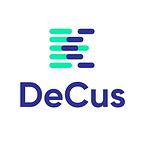eBTC is a tokenized bitcoin on Ethereum Network. Backed 1:1 with real BTC, eBTC provides a better solution with improved efficiency and decreased risk in a truly decentralized way.
Why is DeCus launching with eBTC?
2020 has seen a big blossom of DeFi applications on Ethereum Network, while bitcoin, the largest cryptocurrency by market capitalization, is incompatible with the current DeFi structure. The incompatibility makes bitcoin holders outsiders of the prosperous DeFi world, meaning that they cannot enjoy DeFi services, as well as the opportunities of liquidity mining and farming in DeFi.
Some projects are already working on addressing this problem and the amount of tokenized BTC on Ethereum has been exploding — the number of supply has increased almost 135X in 2020, from 1040 to 138,530. Despite this growth, tokenized BTC merely accounts for 0.75% of the circulating supply of real BTC.
Therefore, in order to bring value as well as liquidity of BTC, the first-class citizen in cryptocurrency, we decided to launch with eBTC, a better tokenized bitcoin to satisfy the tremendous market demand.
How does the system work?
As the core role of whole system, Keepers in the Custodian Network are responsible for the custody of bitcoins and provide crypto collaterals against system security risk.
Running nodes is another responsibility for Keepers. They need a cloud server to configure private key of Ethereum Network to verify identity and interact with smart contracts, and to initiate and verify Bitcoin multi-sig transactions.
Smart contracts deployed on Ethereum Network will mint eBTC. The whole process is organized in a 100% decentralized way given Keepers are permission-less to join or leave the Network at will. Users can cross chain their crypto assets in a secure and decentralized way up to a capacity backed by the crypto collaterals provided by the Keepers.
Due to the exclusive algorithm of DeCus, Keepers are managed to be decentralized custodians at a low collateralization rate, with the security of custody still being guaranteed, thus improving the utilization rate of crypto assets.
The following picture shows how bitcoin can be turned to eBTC.
Why is eBTC better than other tokenized bitcoins?
Decentralization and scalability are well balanced by eBTC compared to other tokenized bitcoins.
Some tokenized bitcoins, like WBTC and HBTC, are issued by a centralized party, so they may become irredeemable in case of a single point failure or censorship.
Other BTC-backed tokens, such as tBTC and renBTC, are issued in a decentralized way. However, they rely on a high collateralization rate to mitigate the risk of price fluctuation and misbehavior. For example, each minted tBTC-token requires collateral of value ≥1.5BTC, and each renBTC requires collateral value ≥3BTC. Such over-collateralization would significantly increase the cost of using tokenized bitcoins.
eBTC gives a different answer. The decentralized and self-regulated Keeper Network of the system enables eBTC implementation at a much lower collateralization rate, with 30%-50% compared to the average more than 150% of other solutions, while still kept decentralized.
Any questions about DeCus and eBTC, please join us on Telegram: https://t.me/decus_official
